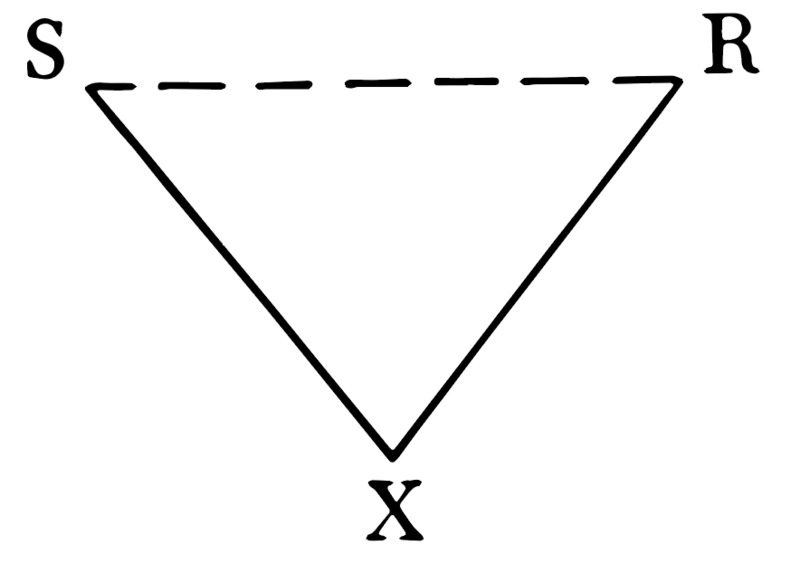Structure of Sign Operations
Item
-
Title
-
Structure of Sign Operations
-
Description
-
Every elementary form of behavior presupposes a direct reaction to the task set before the organism (which can be expressed by the simple S ––> R formula). But the structure of sign operations requires an intermediate link between the stimulus and the response. This intermediate link is a second order stimulus (sign) that is drawn into the operation where it fulfills a special function; it creates a new relation between S and R. The term "drawn into" indicates that an individual must be actively engaged in establishing such a link. This sign also possesses the important characteristic of reverse action (that is, it operates on the individual, not the environment).
Consequently, the simple stimuli-response process is replaced by a complex, mediated act, which we picture as [the diagram].
In this new process the direct impulse to react is inhibited, and an auxiliary stimulus that facilitates the completion of the operation by indirect means is incorporated.
Careful studies demonstrate that this type of organization is basic to all higher psychological processes, although in much more sophisticated forms than that shown above. The intermediate link in this formula is not simply a method of improving the previously existing operation, nor is it a mere additional link in an S-R chain. Because this auxiliary stimulus possesses the specific function of reverse action, it transfers the psychological operation to higher and qualitatively new forms and permits humans, by the aid of extrinsic stimuli, to control their behavior from the outside. The use of signs leads humans to a specific structure of behavior that breaks away from biological development and creates new forms of a culturally-based psychological process.
-
Designer
-
Vygotsky, Lev
-
Date
-
1930
-
Bibliographic Citation
-
Vygotsky, L. S. (1978). Mind in Society: The Development of Higher Psychological Processes. Edited by Michael Cole, Vera John-Steiner, Sylvia Scribner, and Ellen Souberman. Harvard University Press. Pages 39-40.

